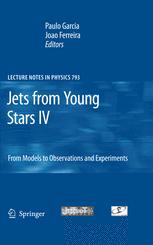

Most ebook files are in PDF format, so you can easily read them using various software such as Foxit Reader or directly on the Google Chrome browser.
Some ebook files are released by publishers in other formats such as .awz, .mobi, .epub, .fb2, etc. You may need to install specific software to read these formats on mobile/PC, such as Calibre.
Please read the tutorial at this link: https://ebookbell.com/faq
We offer FREE conversion to the popular formats you request; however, this may take some time. Therefore, right after payment, please email us, and we will try to provide the service as quickly as possible.
For some exceptional file formats or broken links (if any), please refrain from opening any disputes. Instead, email us first, and we will try to assist within a maximum of 6 hours.
EbookBell Team

4.4
12 reviewsAstronomical jets are key astrophysical phenomena observed in gamma-ray bursts, active galactic nuclei or young stars. Research on them has largely occurred within the domains of astronomical observations, astrophysical modeling and numerical simulations, but the recent advent of high energy density facilities has added experimental control to jet studies.
Front-line research on jet launching and collimation requires a highly interdisciplinary approach and an elevated level of sophistication. Bridging the gaps between pure magnetohydrodynamics, thermo-chemical evolution, high angular resolution spectro-imaging and laboratory experiments is no small matter. This volume strives to bridge those very gaps. It offers a series of lectures which, taken as whole, act as a thorough reference for the foundations of this discipline. These lectures address the following:
· laboratory jets physics from laser and z-pinch plasma experiments,
· the magnetohydrodynamic theory of relativistic and non-relativistic stationary jets,
· heating mechanisms in magnetohydrodynamic jets, from the solar magnetic reconnection to the molecular shock heating perspectives,
· atomic and molecular microphysics of jet shocked material.
In addition to the lectures, the book offers, in closing, a presentation of a series of observational diagnostics, thus allowing for the recovery of basic physical quantities from jet emission lines.